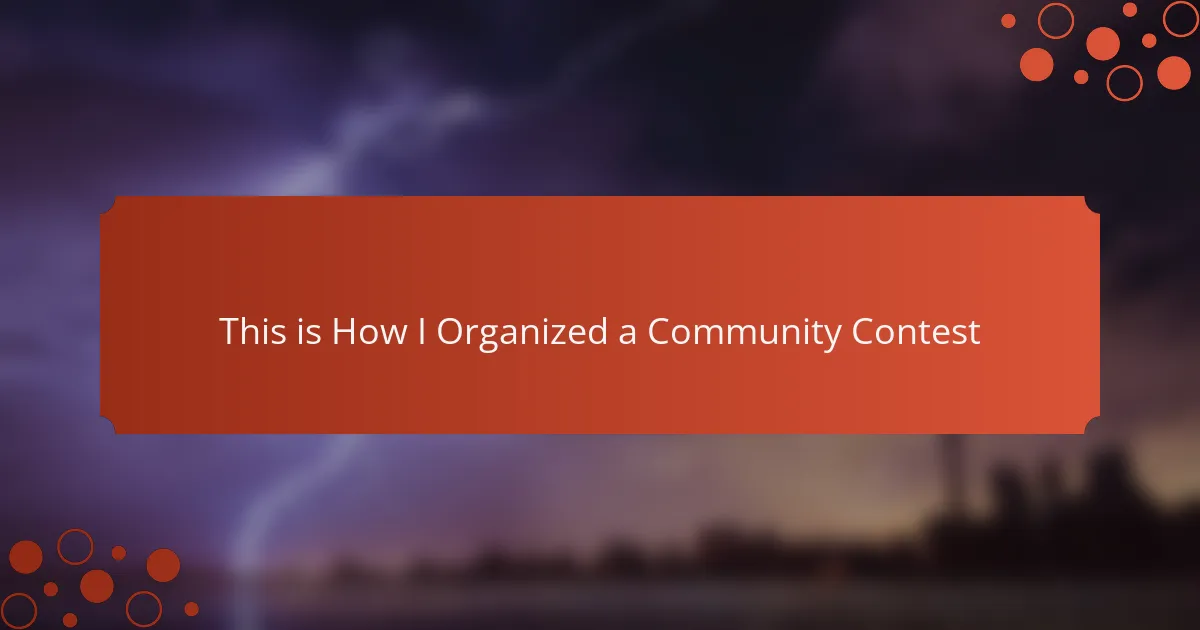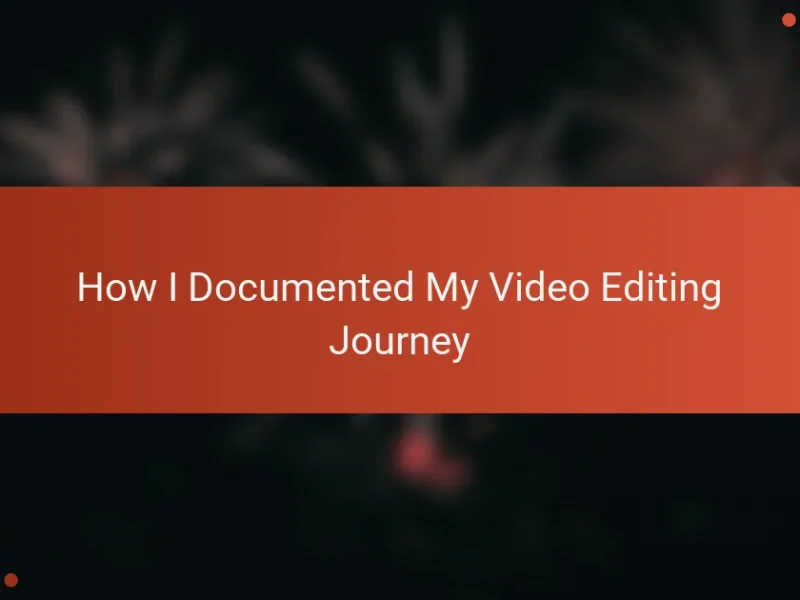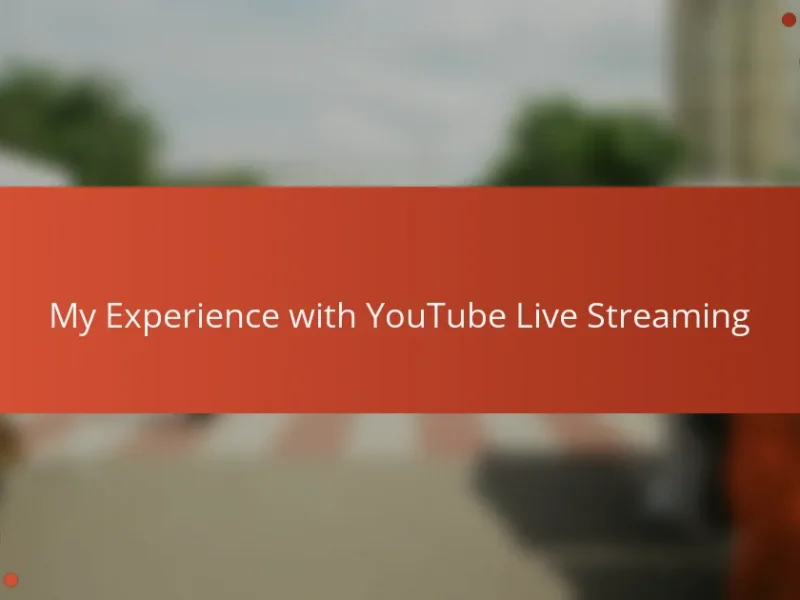Key takeaways
- Video contests foster creativity and community connection, inspiring diverse participation through engaging themes.
- Effective planning involves aligning contest goals with community interests, ensuring clarity in rules, and involving community members in the process.
- Promoting the contest requires personal outreach and engaging content to build excitement and encourage participation.
- Providing constructive feedback post-contest helps build trust and fosters continued engagement within the community.
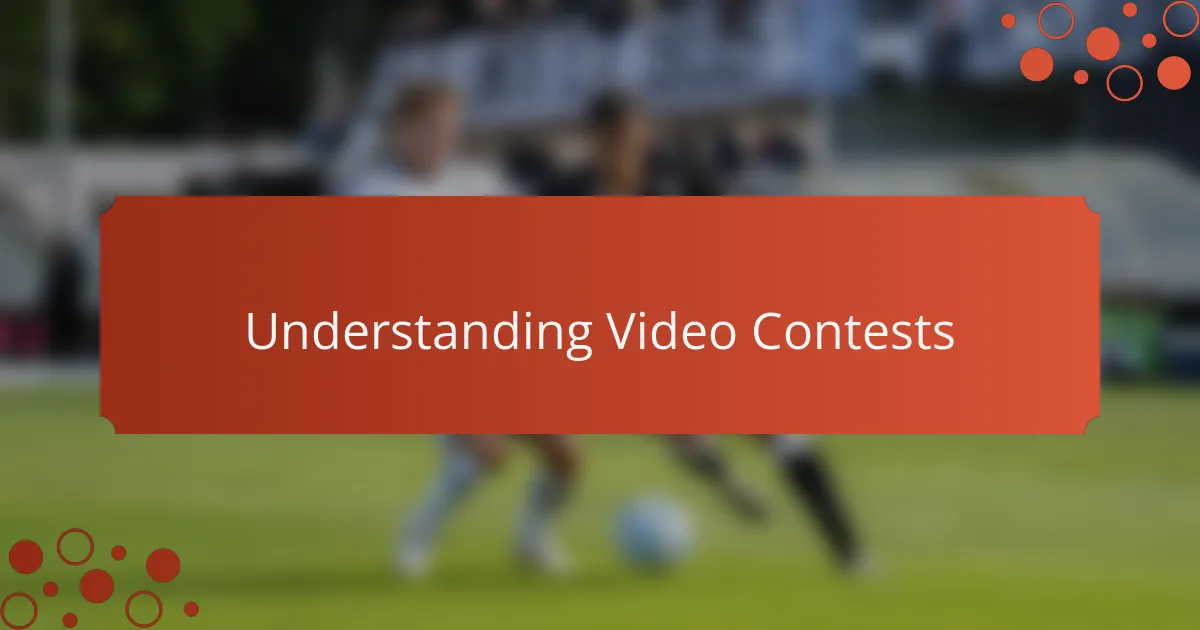
Understanding Video Contests
Video contests are more than just competitions; they’re platforms where creativity meets community spirit. I’ve seen firsthand how the excitement of sharing personal stories through videos can bring people together in ways words alone sometimes can’t. Have you ever wondered what makes a video contest truly captivating? For me, it’s the mix of originality, emotion, and connection that sparks both participation and enthusiasm.
When I first got involved with video contests, I realized they offer more than just prizes—they create opportunities for voices to be heard and talents to shine. It’s fascinating how a simple theme can inspire countless unique interpretations, each reflecting different perspectives and experiences. What’s your take on why video contests resonate so well with diverse audiences?
Understanding these dynamics helped me appreciate the deeper value behind organizing such contests. It’s not just about judging videos but fostering an environment where everyone feels motivated to express themselves authentically. This insight shaped how I approached the community contest later on, focusing on inclusivity and genuine engagement.
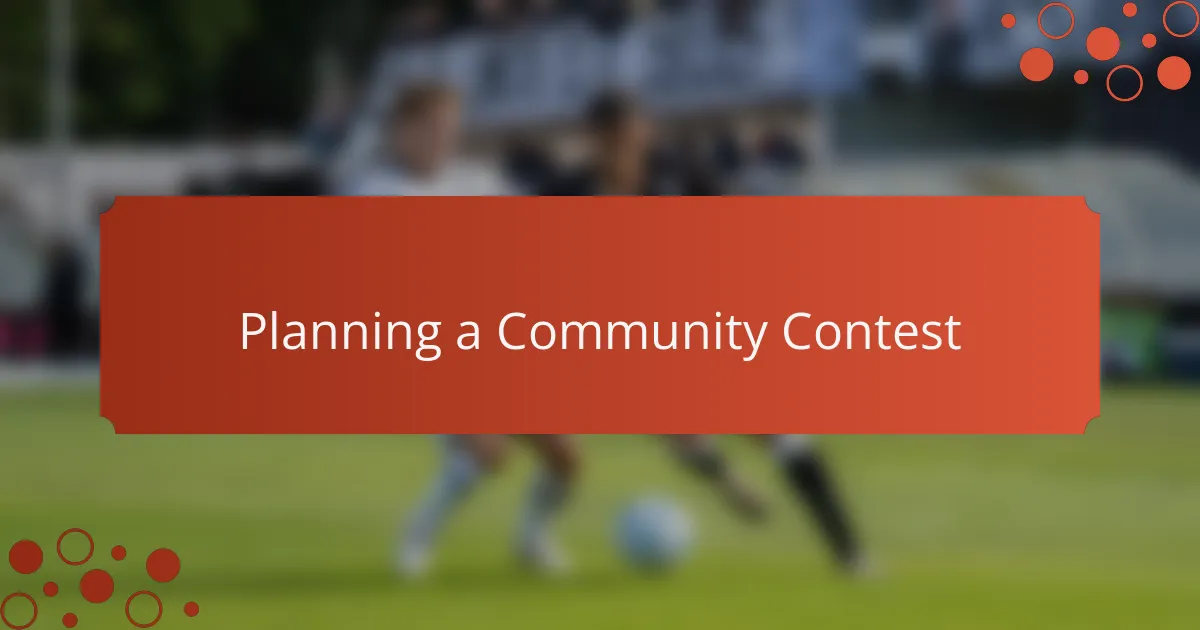
Planning a Community Contest
Planning a community contest begins with setting clear goals that resonate with the audience’s interests and values. I remember the moment I realized that aligning the contest theme with what genuinely excites the community makes all the difference—participants become more eager, and the contest feels alive. Have you ever noticed how meaningful themes inspire creativity in ways generic topics just don’t?
Another key step I found essential was mapping out the logistics carefully, from timelines to submission formats. It might sound straightforward, but trusting my experience, small details like clear deadlines and user-friendly submission processes ease the path for everyone involved. Isn’t it frustrating when technical glitches or vague instructions discourage people from joining?
Lastly, involving community members early on turned out to be a game-changer. I asked for their input and feedback, which created a shared sense of ownership and excitement. When people feel part of the planning, they don’t just participate—they become passionate advocates. Have you tried tapping into that collective energy before? It’s truly rewarding to witness how it elevates the whole experience.
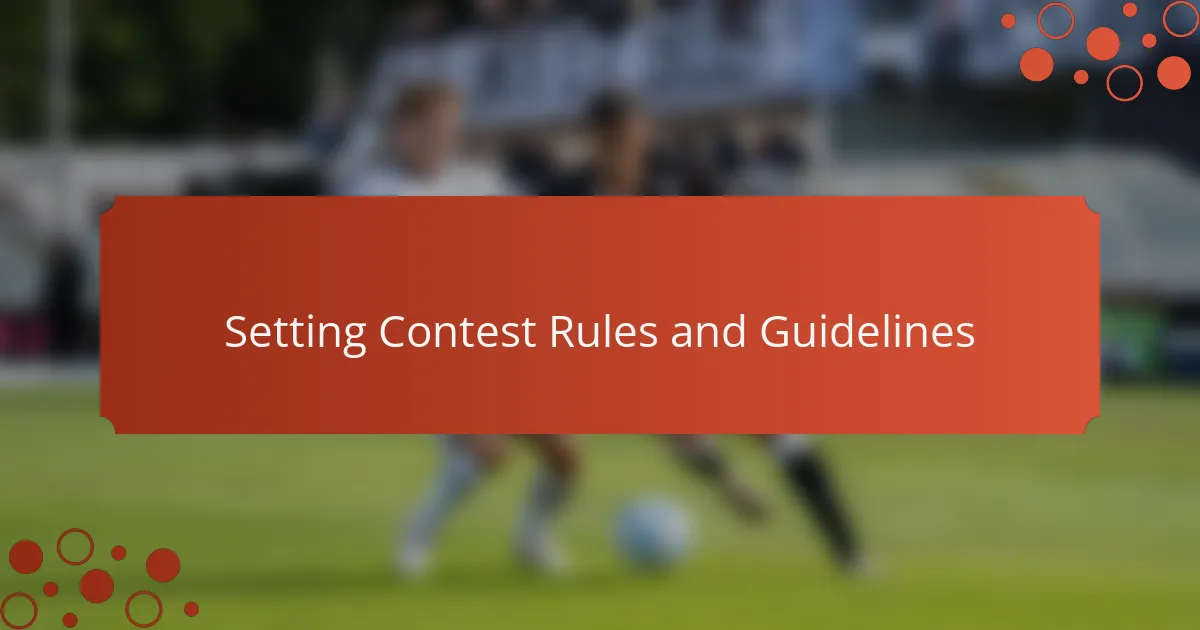
Setting Contest Rules and Guidelines
Setting contest rules and guidelines felt like setting the foundation for everything that would come next. I quickly learned that clarity here is non-negotiable—ambiguous rules can confuse or even discourage participants, no matter how excited they are. Have you ever joined a contest only to get lost in fine print or vague instructions? I certainly have, and it’s frustrating.
One thing I kept in mind was balancing fairness with flexibility. While I needed solid criteria for judging and submission limits, I also wanted to leave room for creativity to shine without unnecessary constraints. It was a delicate dance—too rigid, and you suffocate imagination; too loose, and the contest risks chaos. Finding that sweet spot took some trial and error.
I also realized how important it is to communicate the rules in a friendly, approachable way. Instead of dry lists, I aimed for guidelines that felt like helpful advice from one creator to another. This approach seemed to ease nerves and build trust, making participants feel supported rather than policed. Doesn’t that make you want to dive in and create?
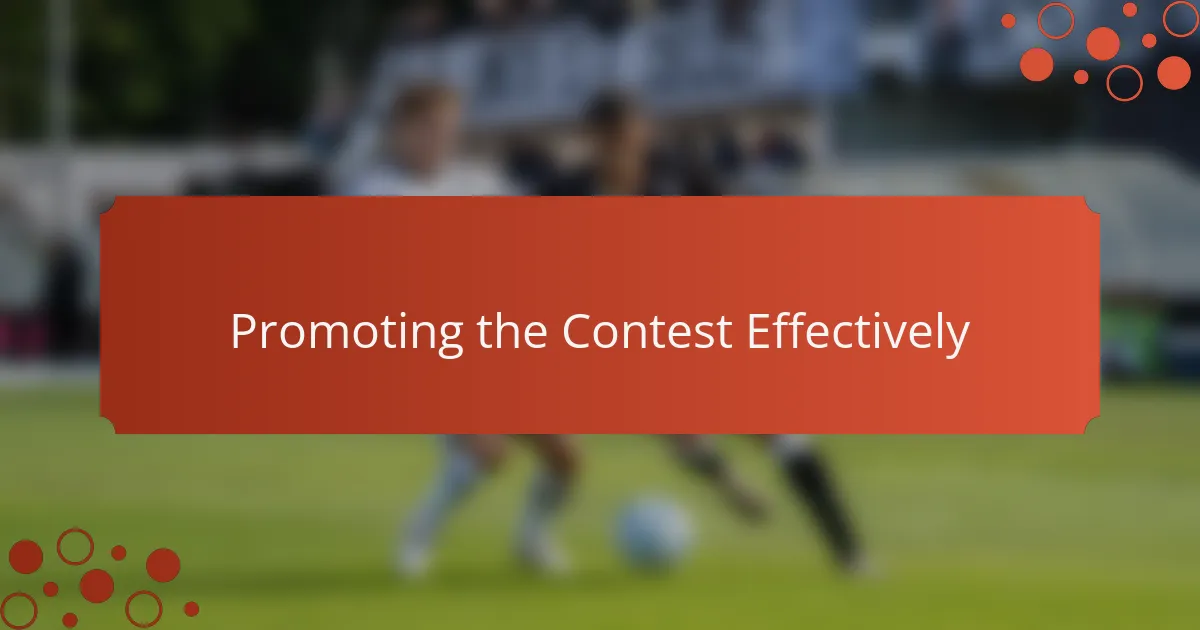
Promoting the Contest Effectively
Getting the word out about the contest was where things really took off for me. I found that a mix of targeted social media posts and direct outreach to local groups sparked genuine interest. Have you ever noticed how a well-timed, personal message can motivate people more than a generic announcement? That’s exactly what happened when I tagged community influencers who then shared the contest with their followers—it created a ripple effect I hadn’t anticipated.
Another strategy I leaned into was creating engaging teaser content that teased the theme and showcased participant stories from past contests. Seeing real examples made potential entrants imagine themselves in the spotlight, and that emotional connection was key. I remember one message from a newcomer who said those teasers gave her the confidence to submit her first video—moments like that remind me why promotion isn’t just about spreading the word but inspiring action.
Finally, consistency mattered a lot. I scheduled regular updates and reminders without overwhelming the community, striking a balance that kept excitement alive right up until the deadline. Have you tried staying present but not pushy in your promotions? It’s a fine line, but finding it helped sustain momentum and maintain a positive buzz throughout the contest period.

Managing Contest Submissions
Handling contest submissions felt like steering a lively, unpredictable ship. I quickly learned that setting up a simple, intuitive platform for entries eased a lot of potential headaches. Have you ever tried collecting videos through complicated systems? From my experience, even the most creative participants get bogged down by clunky submission processes.
Organizing submissions also meant staying on top of details—making sure entries met the guidelines, were complete, and arrived on time. It was a balancing act between being thorough and respectful; nobody wants their enthusiasm dampened by endless form checks or rigid rejections. I found that clear communication with submitters, gently explaining any fixes needed, really kept the momentum positive.
One surprising insight was how much managing submissions became a community-building moment itself. As I reviewed videos, I felt connected to each storyteller, discovering unexpected voices and perspectives. Have you ever thought about how the submission phase isn’t just administrative but a chance to celebrate creativity unfolding in real time? For me, that made the whole effort deeply rewarding.
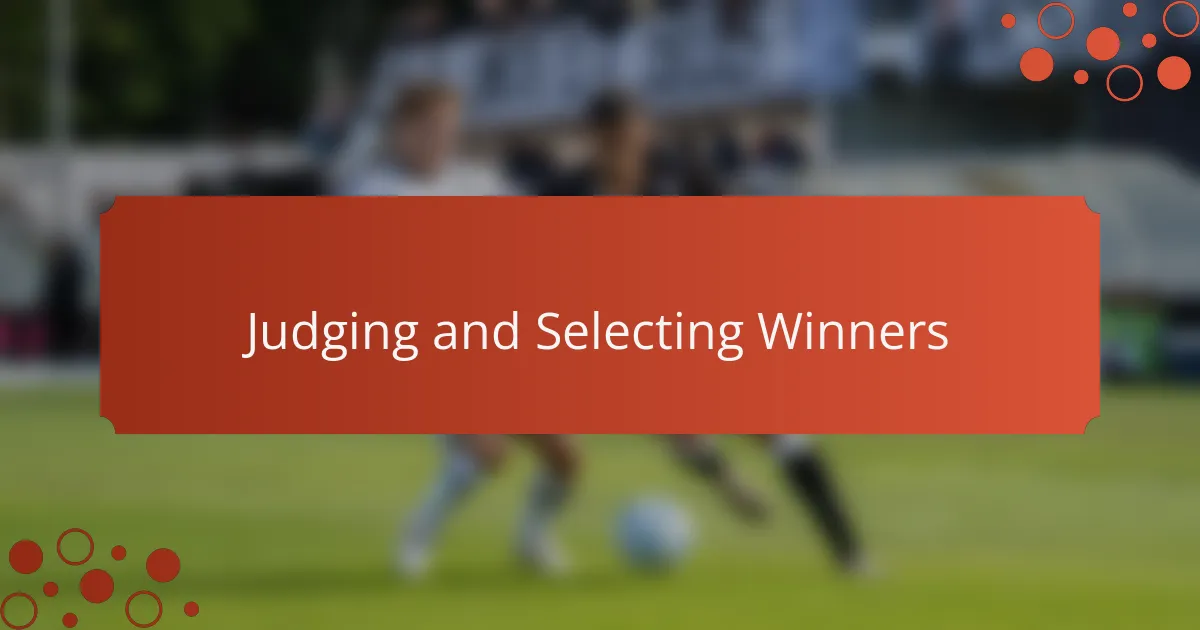
Judging and Selecting Winners
Selecting winners was one of the most challenging yet rewarding parts of the contest. I found that establishing clear, objective criteria before viewing submissions helped me stay focused and fair, even when some videos tugged at my heartstrings more than others. Have you ever struggled to balance your personal feelings with the need for impartial judgment? It’s a delicate dance that tests your integrity but ultimately strengthens the credibility of the contest.
To keep things transparent, I involved a small panel of judges from the community who brought diverse perspectives to the table. This diversity not only enriched the evaluation process but also eased the pressure of making tough calls alone. I remember one lively discussion where differing viewpoints sparked deeper appreciation for the entries—we learned a lot about what community really values through that exchange.
In the end, I prioritized recognizing authenticity and creativity over technical perfection. It’s tempting to focus on polished videos, but it was the genuine stories and unique voices that truly resonated with me. Isn’t that what makes a community contest special—the chance to celebrate real people sharing pieces of themselves? That belief guided every decision in choosing the winners and made the contest feel meaningful beyond any prize.
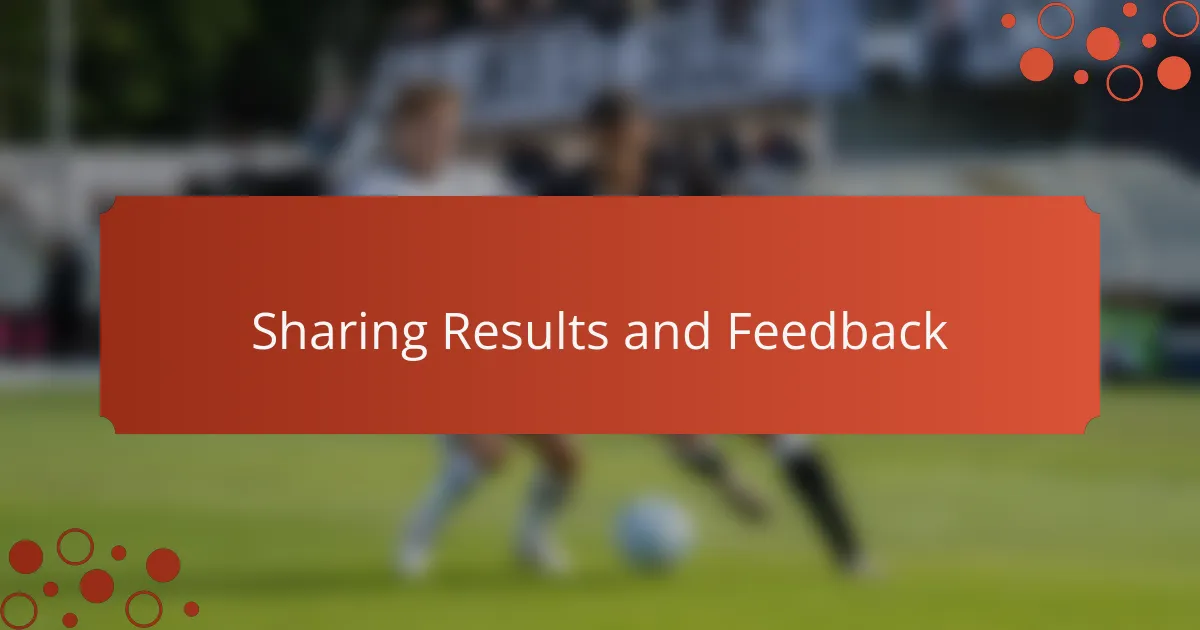
Sharing Results and Feedback
Sharing the contest results brought a mix of excitement and nervousness for me. I was eager to celebrate the winners but also wanted to acknowledge everyone’s effort honestly. Have you ever seen how a simple, heartfelt announcement can turn disappointment into motivation? That moment reminded me why transparency matters so much in these contests.
I made sure to provide detailed feedback to as many participants as possible—not just the winners. It felt important to highlight what stood out in each video and suggest ways to grow. From my experience, this kind of personalized input builds trust and encourages people to keep creating. Don’t you think feedback is the best gift we can give to fellow creators?
Lastly, I noticed that sharing the results sparked new conversations within the community. People started exchanging ideas, celebrating different styles, and even planning collaborations. It was like the contest didn’t end with the prizes but opened a new chapter of engagement. Have you witnessed that ripple effect when a contest turns into a real creative movement? That’s exactly what I hoped to see all along.
